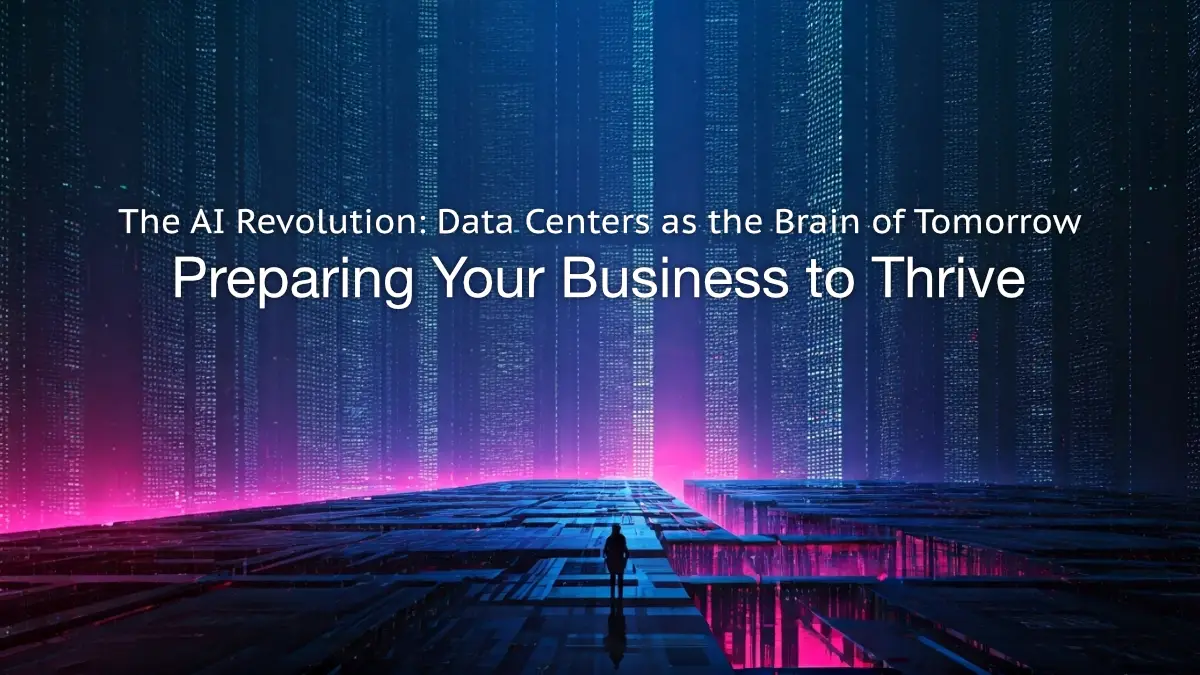Prefer to Listen? Enjoy the Audio Version of This Article.
The AI Revolution
Let’s start with the backbone: AI’s massive build-out. Data centers aren’t just warehouses full of servers anymore. They’re growing into what I call the big brains of the AI army, central command units processing unimaginable amounts of data to power everything detached from them. Think autonomous cars navigating rush hour, robots assembling products in factories, smart devices in your home adjusting lights and thermostats, power grids balancing energy loads in real time, water and waste management systems optimizing resources, even traffic lights syncing to ease congestion. All of this, controlled by these hulking facilities humming with GPUs and cooling systems.
The expansion is staggering. Projections show global power demand from data centers could surge 165% by 2030, driven by AI’s insatiable hunger for compute power. By then, these centers might consume up to 9% of U.S. electricity, equivalent to powering millions of homes. Companies like Microsoft and Amazon are pouring billions—$80 billion and $86 billion respectively—into AI infrastructure this year alone. This isn’t hype; its infrastructure being laid down like railroads in the 1800s, connecting a new era. But here’s the unnerving part: as these data centers centralize control, we’re handing over the reins to systems that learn and decide faster than any human. It’s playing out before our eyes, and if it makes you uneasy, you’re not alone. That’s a normal reaction to watching the world tilt toward something so powerful.
The Unsettling Shift: AI’s Grip on Jobs and Daily Life
This isn’t just about tech toys; AI is intertwining with your personal life and reshaping jobs at a pace that leaves no room for complacency. Those living willy-nilly, assuming business as usual, might wake up to a world they don’t recognize. AI isn’t coming; it’s here, automating routines and decisions that once defined human work. Take programming, for instance. Predictions show that much of the coding done by humans today could be replaced by AI within a year. While another report suggests that 40% of programming tasks might be automated by 2040, but the acceleration we’re seeing points to faster displacement. Overall, AI could displace 92 million roles by 2030, though it might create 78 million new ones in its wake.
I’ve seen this in action through my work in digital marketing. A client of mine, a mid-sized e-commerce firm, was drowning in manual data entry for inventory tracking. They ignored early AI tools, sticking to spreadsheets and gut feelings. Meanwhile, competitors integrated AI for predictive analytics, forecasting demand and adjusting stock automatically. Within six months, my client’s sales dipped 20%, and they had to lay off staff to cut costs. It wasn’t just business; families felt the hit. Stories like this are multiplying. News feeds are full of layoffs—manufacturing giants restructuring, tech firms slimming down—all partly fueled by AI efficiencies. But it’s not all doom. The key is pivoting. AI comes for repetitive jobs first: data analysis, customer service scripts, even entry-level coding. Yet, it creates opportunities in oversight, ethics, and creative application. The revolution affects personal lives too—your smart fridge ordering groceries, AI assistants managing schedules, or algorithms curating your news. Embrace it, or get sidelined.
Inventory Your Business: Where AI Can Streamline Operations
To stay ahead, start by taking inventory of your business—not products on shelves, but the guts of how it runs. I’m talking about internal workflows, people management, customer service, sales processes, marketing campaigns, finance operations, supply chain logistics, and even HR functions like recruitment and training. Scrutinize every piece: where are the bottlenecks? Which tasks eat hours without adding value? AI can streamline these, but only if you map them out first.
Consider workflows. If your team spends days compiling reports, AI tools can automate data aggregation and insights in minutes. People management? AI-powered platforms track performance, suggest training, and flag burnout risks. Customer service is ripe for chatbots handling routine queries, freeing humans for complex issues. Don’t forget sales—AI can score leads, personalize pitches, and predict churn. Marketing? Algorithms optimize ad spend and content creation. Finance gets forecasting models that spot trends early. Supply chain? Predictive maintenance for equipment and route optimization for deliveries. I once helped a logistics company inventory their ops; they found AI could cut delivery times by 15% through real-time routing. It wasn’t magic; it was targeted integration.
Strategies for Integrating AI Effectively
Now, how do you actually weave AI in? It’s not about buying fancy software and hoping for the best. Build a strategy step by step. First, define clear goals: What problem are you solving? Boost efficiency? Cut costs? Enhance decisions? Align AI with your business objectives.
Next, audit your data. AI thrives on quality info, so clean up databases, ensure governance, and address privacy. Then, upskill your team—offer training on AI tools, foster a culture of experimentation. Start small: pilot one area, like automating customer emails, measure results, then scale.
Engage stakeholders early; get buy-in from all levels to avoid resistance. Develop ethical guidelines—transparency in AI decisions, bias checks. Finally, monitor and iterate. AI evolves fast, so review integrations quarterly.
Take Sarah, owner of a boutique marketing agency. She inventoried her workflows and saw content creation lagging. Integrating AI for drafting blogs and social posts cut production time in half. Her team shifted to strategy and client relations, growing revenue 30% in a year. Real results from practical steps.
In wrapping this up, remember: AI’s build-out, with data centers as the core, is reshaping everything from jobs to daily routines. It’s unnerving, sure, but ignoring it guarantees obsolescence. Inventory your business—workflows, management, services, sales, marketing, finance, supply chain—and integrate AI to streamline. Define goals, audit data, train staff, pilot projects, and iterate. The pace is brutal; businesses could go obsolete in six months without adaptation. But embrace it, and you’ll not just survive—you’ll lead.
From the heart, I’ve watched too many good operations falter by clinging to the old ways. Don’t let that be you. Start today: grab a notepad, list your processes, and explore one AI tool that fits. Your future self—and your business—will thank you. Take action now; the AI train isn’t slowing down.
Share this article with colleagues or subscribe to our business unlocked updates for more strategies to fuel success.






